Few things hurt a dairy producer more than sending a pregnant cow milking 100 pounds of milk a day on a trailer to slaughter because she is severely lame, but in herds that battle thin soles. However, this emotionally and financially painful scene occurs more often than one may think.
“We are losing cows at peak production, in calf, to thin soles,” Floyd Sutton from Zinpro told dairy producers at the 2017 Land O’Lakes Leading Dairy Producers Conference held in January in Wisconsin Dells, Wisconsin.
Thin soles occur primarily on rear hooves, the result of excessive wear. Abrasive sand, large pens with long walking distances to the parlor, rough cow handling and improper hoof trimming compound the problem, wearing down the sole to expose the delicate corium, the tissue inside the foot that produces the hoof horn.
As the sole thins, the pedal bone located inside of the foot pinches the corium, sometimes poking through the bottom of the foot.
“It really destroys the cow from the inside,” Sutton added.
Factors that lead to thin soles
Sutton and his colleague, Roger Olson, identified specific environmental factors that contribute to excessive wear and thinning soles.
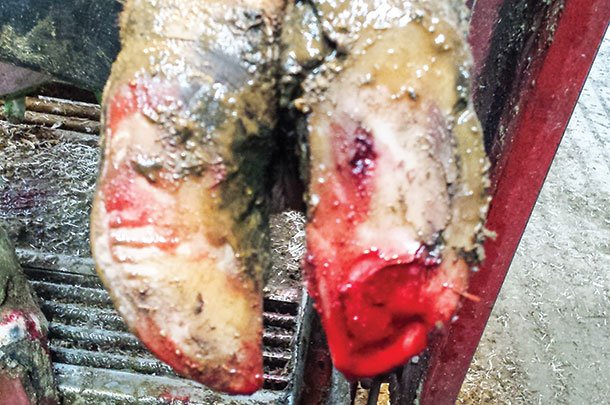 They teamed up with Brian Begert, hoof trimmer and owner of Begert Hoof Care, to explain why dairies experience thin soles and what they can do about it.
They teamed up with Brian Begert, hoof trimmer and owner of Begert Hoof Care, to explain why dairies experience thin soles and what they can do about it.
Coarse sand
“Think about feet when sourcing sand,” he said, noting the extreme variation in coarseness and texture of the material used for freestall bedding. For example, dairies that recycle sand typically have larger, coarser particles compared to those using frack sand.
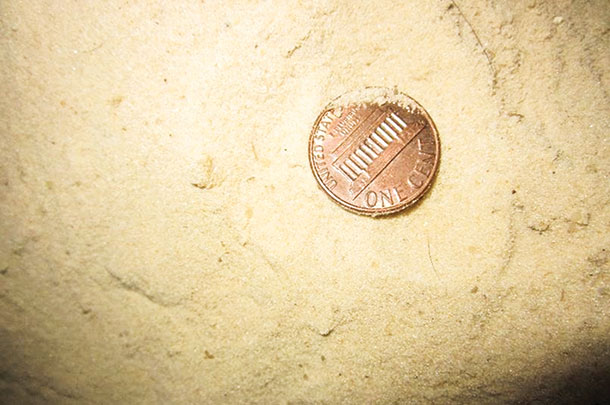
The bigger, rougher particles expedite hoof abrasion, wearing the sole at a rate faster than the corium can produce new horn.
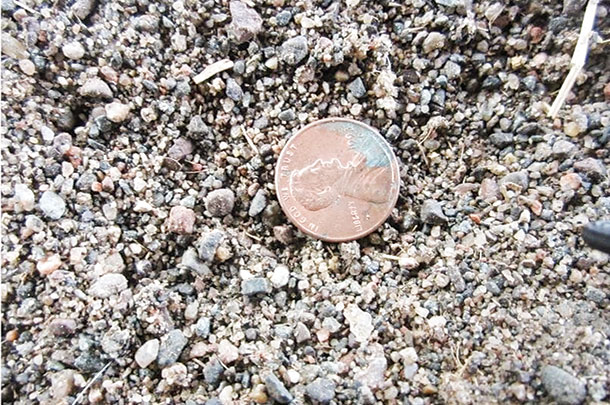 Olson urged dairy producers to be cautious of sand containing granite, which is extremely coarse and harder than rock. “Granite is terrible,” he added. “Sharp rocks wear the hoof in no time.”
Olson urged dairy producers to be cautious of sand containing granite, which is extremely coarse and harder than rock. “Granite is terrible,” he added. “Sharp rocks wear the hoof in no time.”
Slick or rough floors
Another big component of the wear factor is flooring, according to Olson. As facilities age, floors become slick, and cows are at risk for slipping. Some surfaces become extremely rough over time, exposing the aggregate of the concrete. Again, if granite is in the mix, a thin-soled cow is at even greater risk of injury when walking on a rough surface.
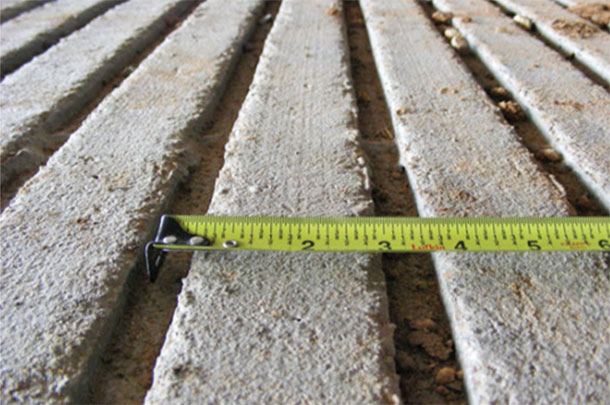 Solutions for floors include planing down the surface, then adding texturing or grooves for traction. Olson also suggested adding rubber to areas of high traffic and where cows make turns, such as in front of the holding pen and return lanes, to alleviate wear.
Solutions for floors include planing down the surface, then adding texturing or grooves for traction. Olson also suggested adding rubber to areas of high traffic and where cows make turns, such as in front of the holding pen and return lanes, to alleviate wear.
Poor animal handling
When cows are rushed, excessive wear is occurring, pointed out Begert. Even herds with good animal-handling practices may have points along the cow’s path to the parlor and back to the pen where the pace picks up. Look for these places and train employees in low-pressure cattle movement techniques to minimize foot trauma.
Improper hoof trimming
On dairies where cows are already exposed to risk factors for thin soles, it is critical for the hoof trimmer to know how to identify and treat this problem. Begert monitors thin soles by measuring toe length and sole thickness. Ideally, the distance from the coronary band (hair line) to the sole should be 3 inches, with a sole thickness of 3/16 inch.
When the hoof is wearing faster than it can generate new horn, it will fall short of these metrics. Thin soles are also soft to the touch. Begert notes, “If you push on the sole and it gives, she’s thin.”
“Do not overtrim,” Begert warned. In herds with excessive wear, he emphasized leaving the axial wall intact and balancing out the foot for weight bearing.
However, he said the most beneficial thing a dairy can do is to locomotion score the day before his visit and identify the mildly lame cows. It is important to find them ahead of time because they are less likely to show symptoms during the stress of trimming.
“When a cow comes in the trim area and her adrenaline is pumping, she is not going to display lameness,” he added.
Begert recommended treating thin soles by applying a block to the thin claw, or both claws if necessary, to give the cow support while she regrows horn. He applies a block with polyurethane glue, then grinds it to the shape of the foot. Blocks are rechecked 8 weeks later.
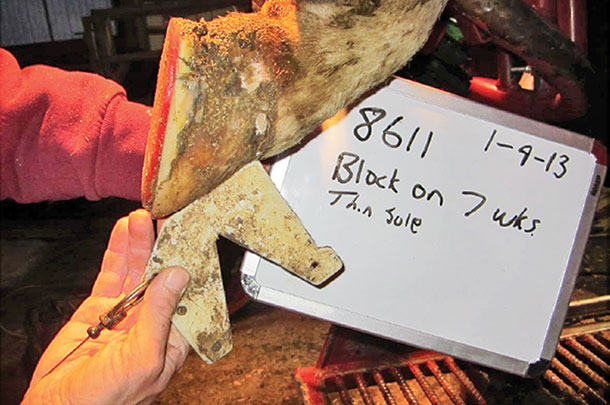 “You’re just giving the cow back what she lost,” he said. Additionally, making the cow more comfortable on her feet encourages walking, which is a natural trigger for her to increase horn production.
“You’re just giving the cow back what she lost,” he said. Additionally, making the cow more comfortable on her feet encourages walking, which is a natural trigger for her to increase horn production.
Sutton further noted the hoof health benefits of feeding vitamins and minerals like biotin and zinc, which he has seen reduce thin soles in herds over the course of several months.
By troubleshooting for these factors and implementing their respective solutions, dairies can reverse thin soles and put a stop to the pain they cause to the cow and the dairy producer. ![]()
PHOTO 1: Excessive wear, often attributed to environment, can cause thin soles and lameness in healthy, high-producing cows.
PHOTO 2 & 3: Very coarse sand causes soles to thin faster than sand comprised of softer, smaller particles.
PHOTO 4: Proper grooving to provide traction is especially important in reducing the risk of trauma for a thin-soled cow. Photos provided by Floyd Sutton.
PHOTO 5: Begert demonstrates how blocking a thin sole for several weeks promotes regrowth of hoof horn to an ideal length. Photo provided by Brian Begert.

-
Peggy Coffeen
- Editor
- Progressive Dairyman
- Email Peggy Coffeen






